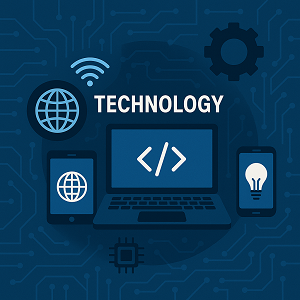TL;DR
- Dell EMC OpenManage Enterprise (OME) 4.2 now supports Microsoft Windows Server 2025.
- It provides unified automation, monitoring, and lifecycle management for Dell PowerEdge infrastructure.
- Enhanced security updates and compliance tools are part of the latest release.
- Ideal for IT organizations seeking centralized management with minimal administrative overhead.
- Improves ROI through simplified updates, firmware management, and global visibility.
- Offers flexible deployment options suitable for midsize to large enterprises.
What’s New or Important Now
As of 2025, Dell EMC OpenManage Enterprise (OME) version 4.2 introduces native compatibility with Microsoft Windows Server 2025. This addition ensures support for the latest OS environments in data centers. The update delivers major security enhancements, as well as performance and usability refinements designed for multi-server management at scale.
According to Dell’s latest OpenManage Enterprise documentation, version 4.2 continues OME’s evolution as a centralized console for hardware lifecycle automation, including discovery, monitoring, and firmware updates across thousands of devices.
Overview: Centralized Infrastructure Management
OpenManage Enterprise is Dell’s flagship IT infrastructure management platform that consolidates multiple administration tasks into a single web-based console. With OME, IT teams can automate server discovery, configuration, and health monitoring across both on-premises and remote data centers.
Through automation, policy-based management, and advanced reporting, OME allows system administrators to efficiently manage the Dell PowerEdge server fleet, storage units, and network devices while maintaining consistent security standards.
Key Benefits of OME 4.2
- Broadened OS compatibility: Full support for Windows Server 2025.
- Improved security posture: Latest code signing, patch validation, and compliance templates.
- Automation-first design: Streamlined workflows for deploying firmware updates and configuration profiles.
- Scalable operations: Capable of managing up to 8,000 devices through modular plug-ins.
- Unified monitoring: Single-pane-of-glass visibility into Dell hardware health and operational telemetry.
Comparison of Dell Management Options
| Feature | OpenManage Enterprise (OME) | OME Modular Edition | iDRAC with Lifecycle Controller | CloudIQ |
|---|---|---|---|---|
| Deployment Model | On-premises virtual appliance | Embedded on PowerEdge MX chassis | Embedded per server | Cloud-based analytics |
| Primary Purpose | Centralized automation and monitoring | Chassis-level management | Individual server control | Predictive analytics & proactive monitoring |
| Scale | Thousands of devices | Up to 20 sleds | Single server | Entire enterprise infrastructure |
| Integration | OpenManage Enterprise plug-ins (e.g., Power Manager, Update Manager) | MX networking and storage integration | Direct access via RESTful API | Dell CloudIQ platform |
| Best For | Midsize to enterprise environments | Modular infrastructure | Individual server administration | Hybrid/multi-cloud users |
Buyer and Architect Guidance
Use cases: OME 4.2 is most beneficial in environments with a large number of Dell PowerEdge servers or hybrid infrastructures requiring consistent compliance and automated patching. Common deployment scenarios include private cloud, VDI clusters, and database farms.
Sizing: Plan resource allocation based on the number of devices and plug-ins. For 1,000 to 2,000 devices, allocating 4 vCPUs and 16 GB RAM to the OVA appliance is typically sufficient. Enterprises above 5,000 nodes should consider allocating 8 vCPUs and 32 GB RAM for optimal performance.
Trade-offs: While OME excels in Dell-centric environments, organizations managing mixed-vendor hardware may require integration with OEM-agnostic platforms such as Red Hat Satellite or Microsoft System Center Operations Manager (source).
Mini Implementation Guide
1. Prerequisites
- Hypervisor supporting OVA/OVF import (VMware vSphere, Microsoft Hyper-V, or KVM).
- Network access to all monitored devices via standard SNMP, WSMAN, or Redfish protocols.
- Administrative credentials for iDRAC or server OS.
- Appropriate licensing for plug-ins like Update Manager Service.
2. Deployment Steps
- Download the latest OME 4.2 appliance image from the Dell Support site.
- Deploy the OVA in your virtual infrastructure and assign proper network settings.
- Access the OME console through a web browser and complete the initial setup wizard.
- Discover devices using IP ranges or iDRAC credentials.
- Apply baseline templates for firmware and BIOS configurations.
- Set automated reports and alerts for health and compliance statuses.
3. Common Pitfalls
- Omitting DNS or NTP configuration during setup can cause authentication delays.
- Failing to align firmware catalog versions may lead to update job failures.
- Under-provisioning CPU/memory on the appliance reduces scan performance.
- Ensure role-based access control (RBAC) to prevent unauthorized changes.
Cost and ROI Considerations
OME is provided at no additional cost with Dell PowerEdge servers, making it one of the most cost-effective centralized management solutions available. However, specialized plug-ins such as Power Manager, SupportAssist Enterprise, or Update Manager Service may carry optional licensing fees.
ROI is achieved through reduction in manual labor, faster incident response, and improved uptime due to proactive monitoring. A typical midmarket organization can recoup deployment costs within six to twelve months through savings in administrative time and unplanned downtime reduction.
FAQs
1. Is Dell EMC OpenManage Enterprise 4.2 compatible with non-Dell hardware?
Primarily designed for Dell hardware, OME can monitor some third-party devices via generic SNMP or Redfish but with limited functionality.
2. How is data secured within OME?
OME 4.2 includes improved encryption, role-based authentication, and secure credential storage to meet modern cybersecurity standards.
3. Can I integrate OME with cloud or orchestration tools?
Yes, through RESTful APIs and Dell’s OpenManage Integration for VMware vCenter or Microsoft System Center.
4. Does OME 4.2 require internet access?
While not mandatory, internet connectivity enables automatic firmware catalog downloads and Dell SupportAssist integration.
5. What types of alerts can OME generate?
Hardware health, performance threshold breaches, power usage, and firmware compliance alerts via email or SNMP traps.
6. How often should OME be updated?
Dell recommends checking quarterly for appliance and plug-in updates to maintain compliance and feature support.
Conclusion
Dell EMC OpenManage Enterprise 4.2 reinforces Dell Technologies’ vision of intelligent infrastructure management through automation, security, and scalability. Supporting Windows Server 2025 and offering a unified console experience, it remains a cornerstone for IT teams modernizing their data center operations. To deepen your understanding or access implementation training resources, visit LearnDell Online.

